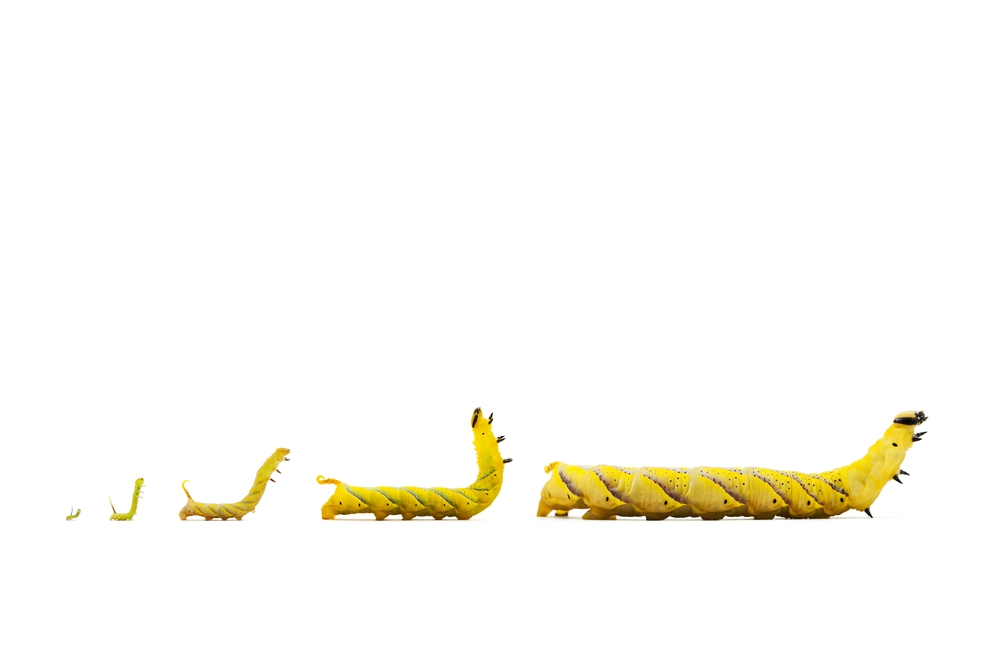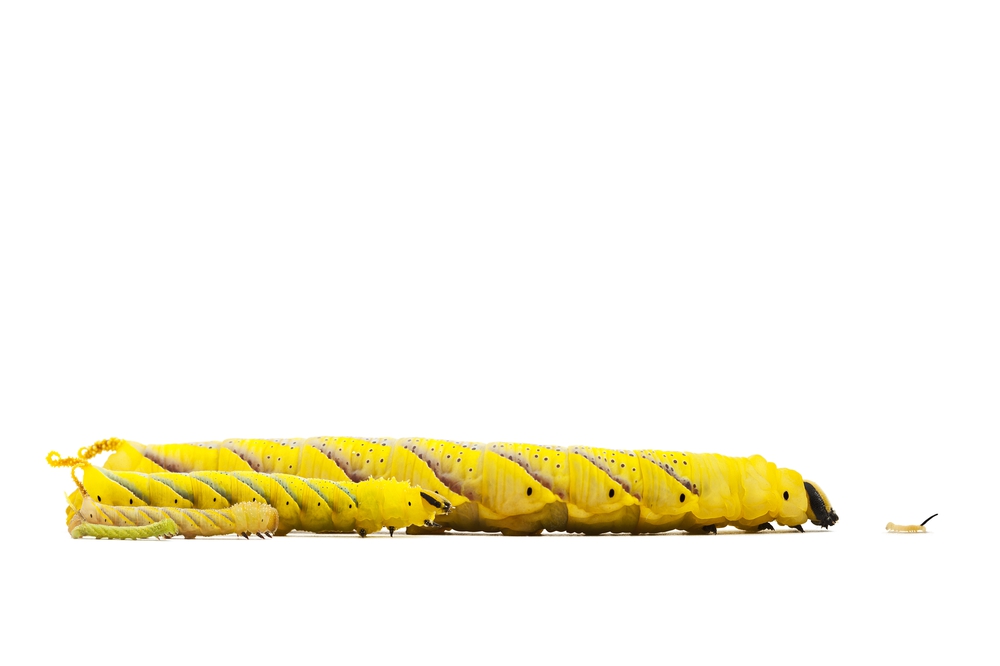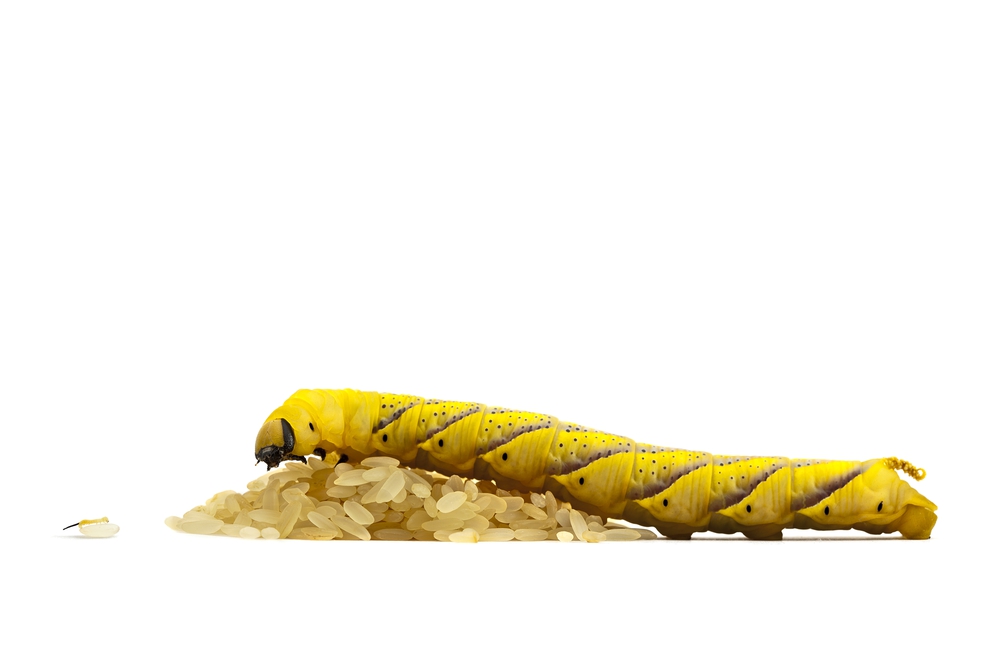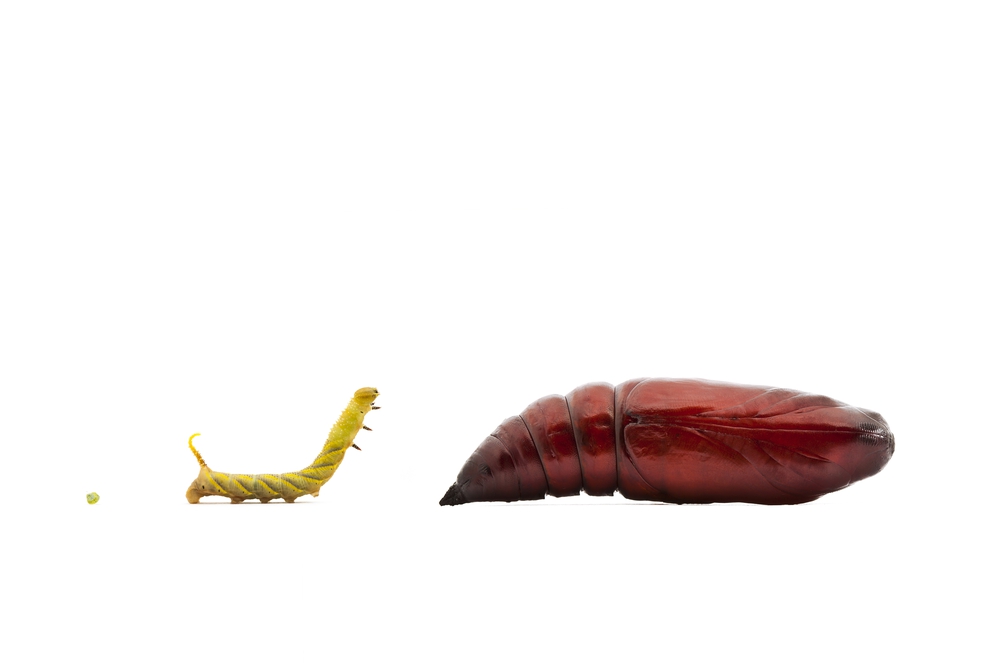Life between egg and pupa
I often ask people: ‘what is the most beautiful insect you’ve ever seen?’. Their response usually is: ‘a butterfly’. They look up strangely if I tell them I think a caterpillar is far more interesting than a butterfly. They become interested if I tell the life-story of a caterpillar and finally they are amazed when I illustrate this story with photographs. The purpose of this photographic story is to fascinate you with facts and numbers, but mostly with storytelling photographs. I observed and photographed a caterpillar from birth till pupation and combined the photographs to illustrate mindblowing facts. The photographed species is the Acherontia atropos, commonly known as the Death's-head Hawk moth. The natural habitat of this moth is Asia and Africa, but because they are migratory moths, you can find them in Europe as well. The caterpillars carry beautiful green-yellow colours and patterns on their body. The proportions were maintained during the image processing.
A 4 week old (fully grown) caterpillar is 15 cm (6 inches) long, while a newly born one has a length of only a few millimetres, roughly the size of the fully grown one's head. An insect has 6 jointed legs, but if you observe closely, you will see that the newly born is standing on 10 legs and still has 6 other legs just behind his head. The legs he’s standing on aren’t real legs. They’re called ‘pseudo-legs’. The difference is obvious: pseudo-legs aren’t jointed…

As soon as caterpillars are born, they immediately start to eat, their skin stretches and their wrinkles disappear. At a certain point, the skin reaches a ‘maximum stretch level’. This is the point where the caterpillar will begin its moulting process. The way in which this happens is utterly fascinating: At first, the caterpillar remains immobile for several days while it's head slowly turns transparent, and after a while a new head is visible inside the old one. Actually, during these days, a fully ‘new caterpillar’ is formed inside the old skin. When this ‘new caterpillar’ is finished, the old skin will tear and the ‘new wrinkled caterpillar’ will creep out. She will start eating once more, the skill will stretch again, and this will lead to another moult. This moulting process takes place several times in a caterpillar’s life. Each moult associates to huge size differences. At the end of her life, the ‘adult’ caterpillar will be 18 times larger then she was at birth.


Every one of you who has ever had a kitchen garden knows that caterpillars are gluttons. And if you never had one, just believe me: they eat A LOT. As seen in the previous parts, the size of a caterpillar increases exponentially during only a short period of time. To sustain this amount of growth, they constantly have to eat. Actually, a caterpillar spends most of its lifetime eating. The caterpillar whose life I documented ate 171 ligustrum leaves in four weeks. You probably have a hard time visualising what 171 leaves look like, so I documented it especially for you in the photograph below. To get a sense of scale, I placed a newly born caterpillar in the lower right-hand corner. In its life, this little caterpillar will eat all these leaves.

As seen in the previous parts, caterpillars are gluttons. The food enters at the front and the digested part leaves at the back. And I can assure you: they defecate a lot. To illustrate this, I photographed a newly born caterpillar in perspective to the amount of poop produced in her lifetime of 4 weeks. As seen in this photo, the caterpillar will produce 4600 times her own weight in poop.

The bigger the caterpillar gets, the more she will weigh. Near the end of her life, my caterpillar was about 5000 times heavier than when she was born. This, however isn’t extraordinary, the mass of some species of caterpillars increases by as much as 27000 times their original weight! As a newly born caterpillar, her weight was equal to a tenth of a grain of rice. When fully grown, she weighted as much as 500 grains of rice. To give you a sense of scale, I photographed the newly born on a single grain of rice. Proportionally to the newly born, I placed the fully-grown one on 500 grains of rice. Apart from this, I want you to notice the ‘Escher-like’ pattern in the pattern on the skin of the large caterpillar. What animal do you recognize in it?

On average, a newborn baby (human) weighs 3,5 kg (7,7 pounds) en has a length of 0,5 metres (20 inches). If such a newborn had the same life-pattern as the photographed caterpillar, it would be unrecognizable after a month’s time. The baby would weigh 17500 kg (3747 pounds) and it would be 9 m (29,5 feet) long. If you want to visualize this, just think of a whale. The next time somebody asks you: ‘what is the most beautiful insect you’ve ever seen?’ You may answer: ‘a butterfly’. But if somebody asks you: ‘what is the most interesting insect you’ve ever seen?’ You should answer: A caterpillar, because of its interesting life between egg and pupa.
